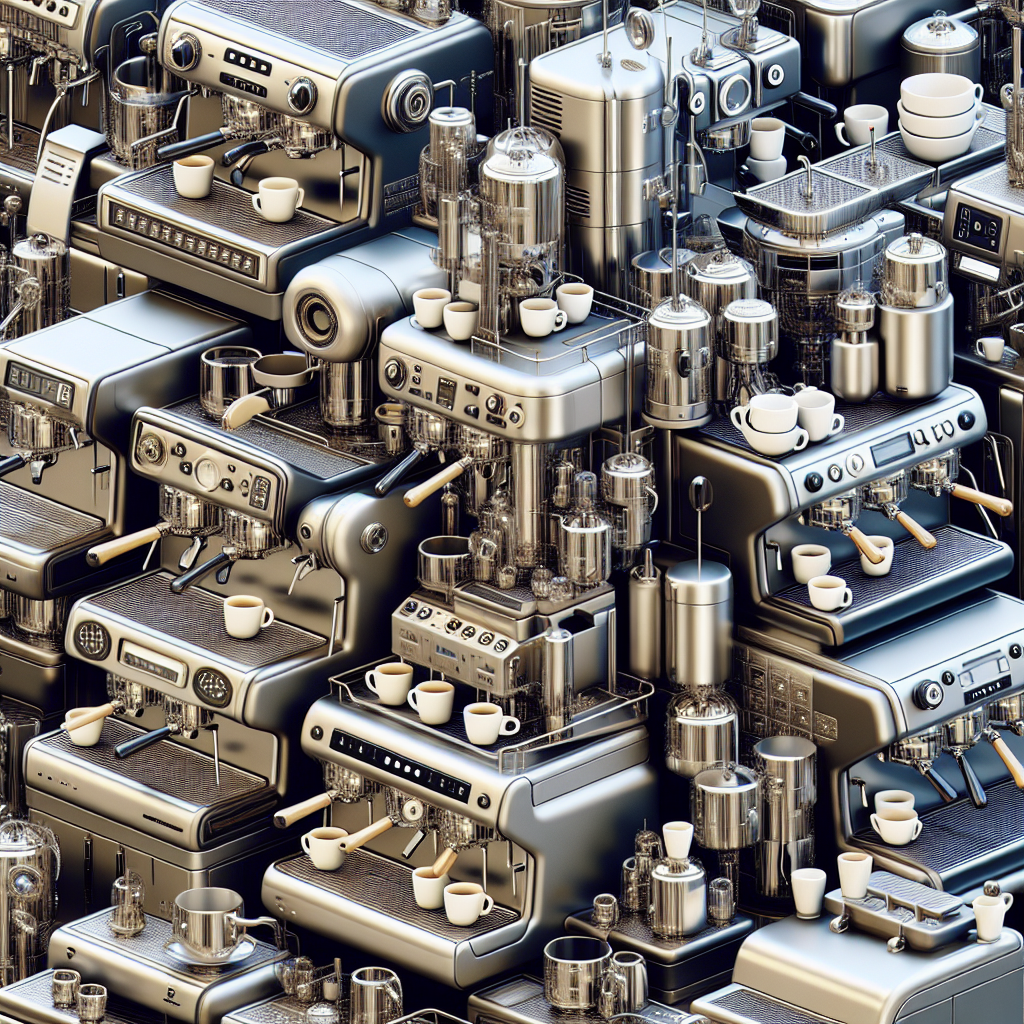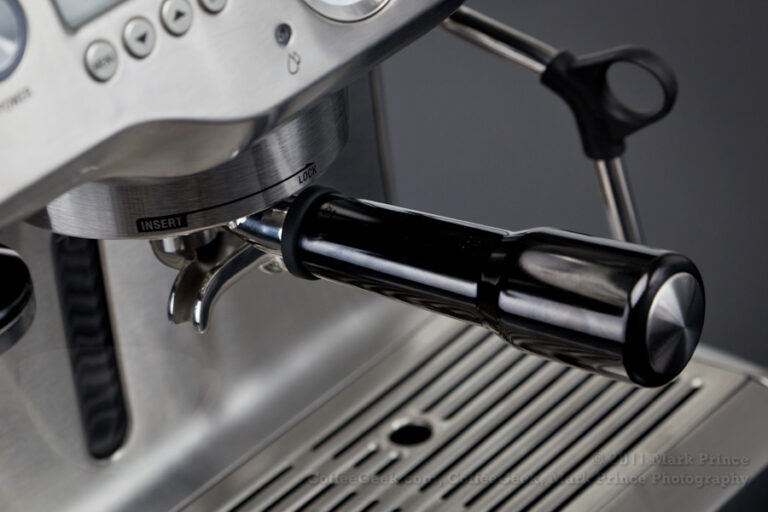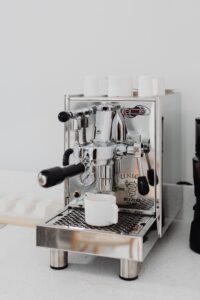
Have you ever taken a sip of espresso and marveled at its perfect balance and flavor? That magic in your cup is no accident. It’s the result of precision engineering and, quite often, the work of a little something called a PID controller. Let’s dive into the world of espresso machines to understand this crucial component.
Mastering Coffee Perfection with PID
Let’s break it down. A PID controller monitors the temperature in your espresso machine’s boiler. It makes rapid adjustments to maintain the set temperature. This means when you pull a shot, the water is always the ideal temperature for extracting all the nuanced flavors from your coffee beans.
But why is this so important? Well, coffee is sensitive. A few degrees too hot, and you’ll burn those precious grounds. Too cool, and you’ll under-extract, leading to a sour, weak espresso. PID controllers keep these mishaps at bay, ensuring every cup is just as good as the last.
Now, you might be thinking, “That sounds complex.” But fear not! While the technology is sophisticated, the user experience is typically straightforward. Many PID-equipped machines have simple interfaces that let you tweak the temperature with the press of a button.
From Temperature to Taste: The Impact of Consistent Heat
Consistency is king in the world of espresso. Imagine if every time you visited your favorite coffee shop, the espresso tasted different. You’d probably start looking for a new spot, right? Consistency is what builds trust and enjoyment in your espresso experience. And that’s what a PID controller brings to your home espresso setup – a trusty partner ensuring each cup is as satisfying as the last.
It’s not just about avoiding bad espresso, though. The right temperature brings out the best in your coffee beans, highlighting the unique flavor profile of each roast. Whether it’s the bright acidity of a light roast or the deep, chocolatey notes of a dark roast, PID controllers help you taste every layer.
Demystifying PID Controllers

“Breville Dual Boiler » CoffeeGeek” from www.coffeegeek.com
Now, let’s demystify this tech talk. PID controllers might sound like something out of a sci-fi movie, but they’re actually quite approachable once you get to know them. They’re like the thermostat in your home, but instead of keeping your living room cozy, they’re all about giving you that perfect shot of espresso.
Defining PID in Espresso Parlance
In the context of espresso machines, PID is your personal barista’s assistant. It’s the difference between a good day and a great day. With PID, you’re not just making coffee; you’re crafting an experience.
The Trilogy of Control: Proportional, Integral, Derivative
The PID controller’s name gives away its superpowers. It’s a trio of strategies working in harmony to control temperature:
-
Proportional: This part reacts to the difference between the desired and actual temperatures. Think of it as how quickly you’d turn the wheel of your car when you start to drift off course.
-
Integral: This bit deals with the accumulated errors over time, like if your car’s been pulling to the side on a long drive. It makes sure even those small, persistent errors get corrected.
-
Derivative: Finally, this component looks at the rate of change, damping the system to prevent overshooting the target. It’s like anticipating a curve on the road and easing into the turn.
Together, these three elements keep the temperature of your espresso machine dialed in to the perfect setting, shot after shot.
History and Evolution of PID in Coffee Machines
PID controllers have been around for a while, but their foray into the coffee world is relatively recent. It used to be that only the most high-end commercial machines had this technology. Now, it’s increasingly common in machines designed for home use, bringing professional-level control to your kitchen counter.
Remember, the goal here is to make your journey as a home barista both rewarding and enjoyable. With a PID controller, you’re equipped to pull shots that could rival your local coffee shop’s – and that’s saying something.
As espresso enthusiasts sought more control over their brew, manufacturers began integrating PID controllers into their designs. This shift has been a game-changer, allowing for a level of precision in temperature control that was previously unattainable for the average consumer. The result? A surge in the quality of home-brewed espresso that can often rival that of your favorite café.
Comparative Analysis: PID and Non-PID Machines

Let’s pit PID against non-PID machines to see what you’re really getting with this technology. It’s like comparing a smartphone to a flip phone; both can make calls, but one offers a whole lot more.
Examining Temperature Stability and Extraction Quality
With PID controllers, temperature stability is the name of the game. They ensure that the water hitting your coffee grounds is the same temperature every time, which is critical for extracting the full spectrum of flavors. Non-PID machines, on the other hand, can be like a roller coaster ride for your coffee – full of ups and downs that can lead to a less-than-stellar cup.
Cost versus Performance Metrics
Yes, PID-equipped machines tend to be pricier, but think of it as paying for consistency and the peace of mind that comes with it. It’s an investment in your daily pleasure, one that pays off with every delicious sip. Non-PID machines may be easier on the wallet, but the variance in temperature can mean a compromise in the quality of your espresso.
User Experience: Operational Complexity
Operating a PID machine can seem daunting at first glance, but it’s really quite intuitive. Once you’ve set your desired temperature, the machine takes care of the rest. Non-PID machines might seem simpler, but they require a more hands-on approach and a bit of guesswork to achieve the right temperature, which can be a bit of a gamble.
Examining the Benefits of PID Espresso Machines

“La Marzocco Linea Mini » CoffeeGeek” from www.coffeegeek.com
Now that we’ve seen how PID controllers stack up against their non-PID counterparts, let’s focus on the benefits these devices bring to your espresso machine – and your coffee cup.
The Quest for the Perfect Shot: Consistency and Precision
Consistency is the hallmark of any great espresso machine, and precision is its trusty sidekick. With a PID controller, you’re in the driver’s seat, able to fine-tune your machine to produce the same high-quality espresso, day in and day out. It’s like having a secret weapon in your coffee arsenal.
So, whether you’re a seasoned barista or a beginner, understanding the role of PID controllers in your espresso machine is key to achieving that perfect shot. It’s not just about temperature – it’s about unlocking the full potential of your coffee beans, every single time.
Flavor Optimization: Unlocking the Potential of Every Bean
Each coffee bean is like a treasure chest full of flavors, waiting to be unlocked. A PID controller is your key to this treasure. By stabilizing temperature, it allows you to extract the best possible flavor from your beans, whether it’s the bright acidity of a Kenyan or the rich earthiness of a Sumatran. It’s about giving each bean the chance to shine in your cup.
Longevity and Reliability of Machines with PID
Investing in a machine with a PID controller isn’t just about taste – it’s also about trust. These machines are built to last, with less wear and tear on their components thanks to the precise control of temperature. This means fewer breakdowns and a longer life for your beloved espresso machine. In other words, a PID machine isn’t just a purchase; it’s a partner in your coffee journey for years to come.
Implementing PID: Technicalities and User Interface

So, you’ve decided a PID controller is a must-have for your espresso machine. Great choice! Now, let’s talk about setting it up. The good news is, it’s not rocket science. Most PID controllers come with a user-friendly interface that makes it a breeze to dial in your desired temperature.
Setting the Parameters: A Step-by-Step Guide
Setting up your PID controller is a straightforward process. Here’s how to get started:
-
Turn on your espresso machine and give it time to warm up.
-
Access the PID controller’s settings, usually with a simple button press.
-
Adjust the temperature using the interface, which typically includes up and down arrows or a dial.
-
Save your settings, if necessary, and let the machine adjust to the new temperature.
-
Once the machine reaches the set temperature, it’s ready to pull a perfectly heated shot.
Remember, the goal is to enhance your coffee experience, not complicate it. Setting the parameters on your PID controller is as easy as setting your alarm clock – and much more rewarding.
Navigating PID Controls: Tips for Beginners and Enthusiasts
If you’re new to the world of PID controllers, here are a few tips to help you get started:
-
Start with the recommended temperature for your type of coffee, then adjust as needed.
-
Be patient. It might take a few tries to find your perfect setting.
-
Take notes on the temperatures you try and the resulting flavors. This will help you refine your settings over time.
-
Don’t be afraid to experiment. The beauty of a PID controller is in its flexibility.
And for the enthusiasts out there, remember that the PID controller is your playground. Test, tweak, and taste until you’ve crafted your ideal espresso profile.
Advanced Tweaking for the Seasoned Barista
For the seasoned barista, a PID controller offers a world of possibilities. Here’s how you can take your espresso game to the next level:
-
Experiment with different temperature profiles for different beans. Lighter roasts may benefit from a slightly higher temperature, while darker roasts might shine at a lower one.
-
Pay attention to the weather. On colder days, you might need to bump up the temperature a bit.
-
Get scientific. Use a thermometer to test the actual water temperature and compare it to the PID setting for maximum accuracy.
Remember, the goal is to make the coffee you love, just the way you love it. A PID controller is your tool to achieve just that.
Selecting Your Ideal PID Espresso Machine

Choosing the right PID espresso machine can feel overwhelming, but it doesn’t have to be. Here’s what to keep in mind:
-
Consider your budget. PID machines come in a range of prices, so decide how much you’re willing to invest in your coffee experience.
-
Think about size and design. You’ll want a machine that fits your space and looks good on your countertop.
-
Look for user-friendly features. A straightforward interface can make all the difference.
-
Check reviews and ask for recommendations. The coffee community is a great resource for finding the perfect machine.
Ultimately, the best PID espresso machine for you is the one that meets your needs, fits your budget, and makes your coffee routine a joy. So take your time, do your research, and get ready to enjoy the best espresso of your life.
Key Factors to Consider When Shopping
When hunting for the perfect PID espresso machine, keep these key factors in mind:
-
Temperature Range: Ensure the machine offers a temperature range suitable for various coffee types.
-
Steam Pressure: Good steam pressure is vital for silky milk frothing. Check the machine’s capabilities.
-
Build Quality: Look for sturdy construction that promises durability and longevity.
-
Water Reservoir: Consider the size of the water tank, especially if you entertain often or drink multiple cups a day.
-
Size and Footprint: Make sure the machine fits comfortably in your kitchen space.
-
Brand Reputation: Research the brand’s reputation for quality and customer service.
-
Warranty and Support: Check what kind of support and warranty are offered with the machine.
Each factor plays a role in your daily brewing experience, so choose wisely and don’t rush your decision.
Analyzing Top Contenders in the PID Arena
There are several top-notch PID espresso machines out there. Here’s a quick look at what sets some of the best apart:
-
NexGen EspressoMaster: Known for its rapid heat-up time and precise temperature control.
-
BaristaPro Deluxe: Boasts an intuitive interface and robust build, perfect for the home barista.
-
DualSteam Supreme: Offers a dual-boiler system for simultaneous espresso extraction and milk steaming.
-
TempCraft Custom: Stands out with its sleek design and customizable temperature profiles.
-
ReliaBlend Pro: Has a reputation for reliability and consistent performance over time.
Consider your personal preferences and how each machine’s features align with them.
Balancing Budget and Performance in PID Selection
It’s crucial to balance the cost with the performance you desire. Here’s how:
-
Set a clear budget based on your willingness to invest in your coffee experience.
-
Identify the must-have features you’re not willing to compromise on.
-
Look for machines that offer the best combination of those features within your budget.
-
Consider the long-term value, not just the upfront cost. A slightly pricier machine might save you money in the long run.
Remember, the right machine is an investment in countless mornings of coffee bliss.
The Future of Espresso: Trends in PID Technology

Espresso technology is always brewing up something new. Let’s peek into the future of PID tech.
Innovations on the Horizon: What’s Next for PID?
Expect to see even more precise control and customization options. We’re talking about PID systems that learn your preferences and adjust accordingly. The future of PID is not just about maintaining temperature; it’s about tailoring the experience to the individual.
Integrating PID with Smart Technology
Smart technology is becoming a staple in the kitchen, and espresso machines are no exception. Imagine controlling your machine from your smartphone, programming it to warm up before you even get out of bed, or having it suggest new temperature profiles based on your brewing history. This is the convenience that awaits in the world of smart PID espresso machines.
Frequently Asked Questions (FAQ)

Let’s tackle some common queries about PID controllers in espresso machines:
What Exactly Does PID Stand for in Espresso Machines?
PID stands for Proportional-Integral-Derivative. It’s a type of control system that ensures your espresso machine heats water to the precise temperature you need for the perfect espresso shot.
Is a PID Controller Necessary for Home Baristas?
While not absolutely necessary, a PID controller is highly recommended if you’re serious about your espresso. It gives you control and consistency that can take your home brewing to the next level.
Can PID Controllers Be Retrofitted onto Older Machines?
Yes, in many cases, PID controllers can be added to older machines. However, it requires technical knowledge and skill. If you’re not comfortable with DIY electronics, it might be best to consult a professional.
How Do I Know If My Espresso Machine Has a PID Controller?
Check the machine’s specifications or manual. If it mentions temperature control or has a digital temperature display, it likely has a PID controller. You can also contact the manufacturer to be sure.
What is the Typical Impact of PID on the Price of Espresso Machines?
PID controllers generally increase the cost of an espresso machine due to their added precision and technology. However, the investment often translates to better espresso and a more satisfying brewing experience.
Armed with this knowledge, you’re now ready to explore the world of PID espresso machines. Happy brewing, and may your cups be ever flavorful and warm!
What Exactly Does PID Stand for in Espresso Machines?
When we talk about PID in the context of espresso machines, we’re referring to a Proportional-Integral-Derivative controller. This nifty piece of tech is essentially the brain behind maintaining the perfect brewing temperature. It continuously measures the water’s temperature and makes adjustments to keep it right where it should be for extracting all those delicious flavors from your coffee beans.
Is a PID Controller Necessary for Home Baristas?
Let’s put it this way: a PID controller isn’t necessary in the same way that an electric drill isn’t necessary to drive a screw – but it sure makes the job easier and the results more consistent. If you’re passionate about your espresso and want to replicate the coffee shop experience at home, a PID controller can be your best friend. It takes out the guesswork and lets you focus on the fun parts of brewing, like tasting and experimenting with different beans.
Can PID Controllers Be Retrofitted onto Older Machines?
Yes, retrofitting a PID controller onto an older espresso machine is possible and can be a fantastic upgrade. But, it’s not a plug-and-play situation. You’ll need some technical know-how, as it involves tinkering with the machine’s heating elements and wiring. If you’re not comfortable with this level of DIY, it’s wise to consult with a professional or consider investing in a new machine that comes with an already installed PID controller.
How Do I Know If My Espresso Machine Has a PID Controller?
To find out if your espresso machine is equipped with a PID controller, start by checking the specs or the manual. Look for mentions of temperature control or a digital display that allows you to set the temperature. If you’re still not sure, a quick call or email to the manufacturer should clear things up. They’ll be able to tell you whether your model uses PID technology or not.


